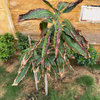New Mango Variety Genesis - is it this simple?.
mangodog
13 years ago
Featured Answer
Sort by:Oldest
Comments (29)
zands
13 years agoRelated Professionals
Edmond Landscape Architects & Landscape Designers · Seabrook Landscape Architects & Landscape Designers · Manchester Landscape Contractors · Brookfield Landscape Contractors · Dixon Landscape Contractors · Emmaus Landscape Contractors · Kearny Landscape Contractors · Maywood Landscape Contractors · Milford Mill Landscape Contractors · Pomona Landscape Contractors · Rio Linda Landscape Contractors · Soddy Daisy Landscape Contractors · Vacaville Landscape Contractors · Wethersfield Landscape Contractors · York Landscape Contractorsjeffhagen
13 years agomangodog
13 years agomango_kush
13 years agozands
13 years agomurahilin
13 years agosquam256
13 years agoeverettsky
13 years agomango_kush
13 years agomangodog
13 years agojeffhagen
13 years agomurahilin
13 years agojeffhagen
13 years agomurahilin
13 years agojeffhagen
13 years agoeverettsky
13 years agoinvar69
13 years agomango_kush
13 years agojeffhagen
13 years agotropicalgrower89
13 years agoinvar69
13 years agozands
13 years agogomango
13 years agoeverettsky
13 years agojeffhagen
13 years agomango_kush
13 years agojeffhagen
13 years agoyoungduncan
12 years ago
Related Stories

LIFESimple Pleasures: Indulging in Teatime
Get out the china cups and cream-slathered scones. Tea with treats can make even an uneventful day feel extravagant
Full Story
HOUZZ TOURSHouzz Tour: Usonian-Inspired Home With All the Wright Moves
A Chicago couple's weekend retreat fulfills a long-held dream of honoring architect Frank Lloyd Wright
Full Story
HOMES AROUND THE WORLDHouzz Tour: A Shoreline Home Glows Like a Lantern
This sailing-mad family’s house in New Zealand, inspired by traditional boat sheds, responds to light and wind
Full Story
FALL GARDENING5 Fall Fruits You Can Grow in Containers
Brighten your porch or patio with a potted pomegranate, kumquat, blueberry bush or another great fall fruit
Full Story
FARM YOUR YARDIf You Have Room for Only One Fruit Tree ...
Juice up a small garden with one of these easier-care or worth-the-effort fruit trees for a mild climate
Full Story
MOST POPULARHow to Get Rid of Those Pesky Summer Fruit Flies
Learn what fruit flies are, how to prevent them and how to get rid of them in your home
Full Story
HOUSEKEEPINGDon't Touch Another Stain Before You Read This
Even an innocent swipe with water may cause permanent damage. Here's what to know about how rugs and fabrics react
Full Story
PETSHouzz Pets Survey: Who Rules the House — Dogs or Cats?
New data shows that pets make people happy, and pet owners love spending big to return the favor
Full Story
MATERIALSAre You a Maker? Show Us Your Favorite Tool or Material
Houzz Call: A tool or material can be a maker’s best friend. We’d like to see your favorite — and what it helps you achieve
Full Story
KITCHEN APPLIANCESThe Many Ways to Get Creative With Kitchen Hoods
Distinctive hood designs — in reclaimed barn wood, zinc, copper and more — are transforming the look of kitchens
Full StoryMore Discussions







hmhausman